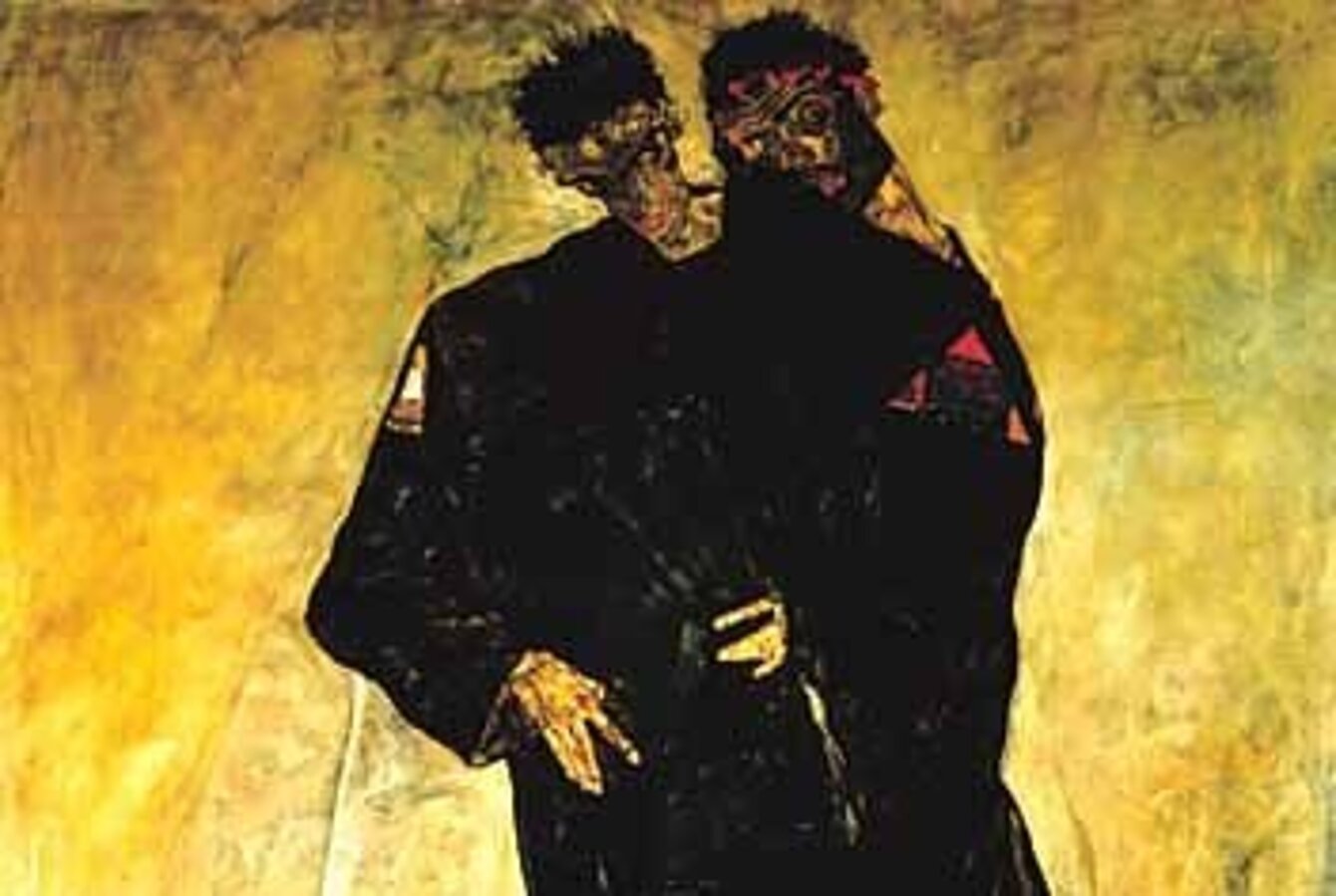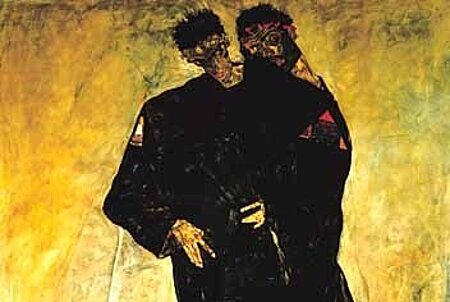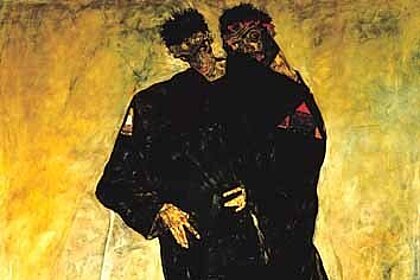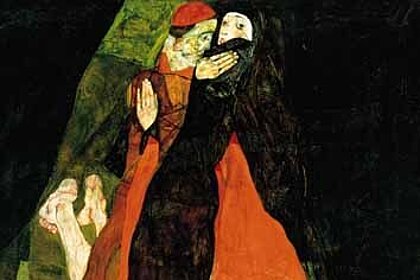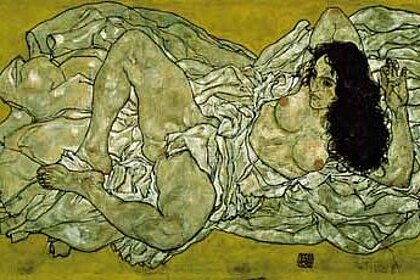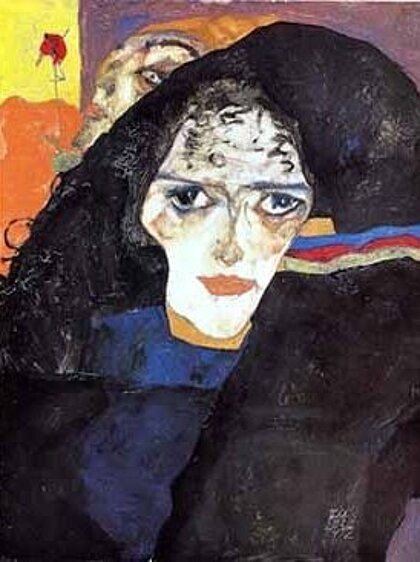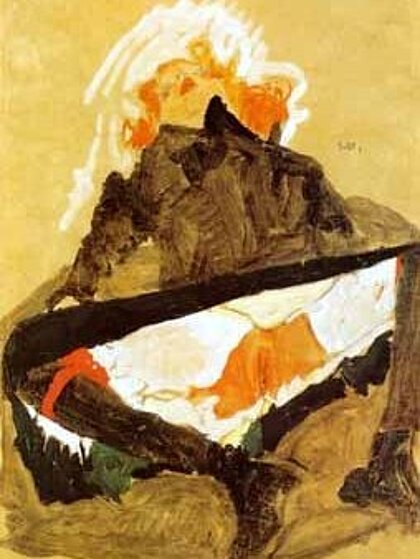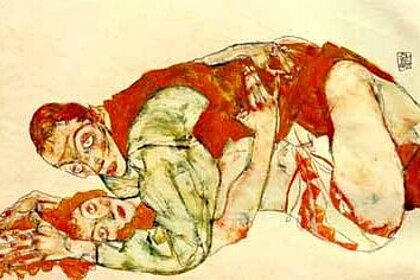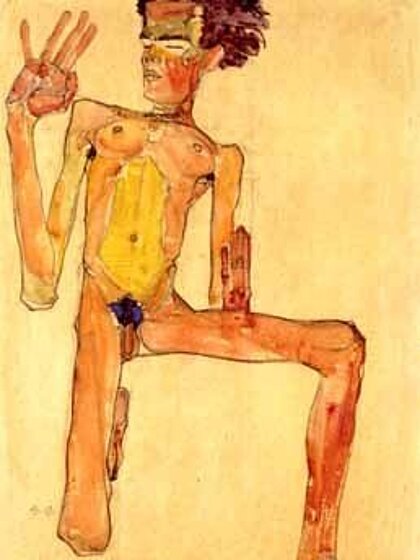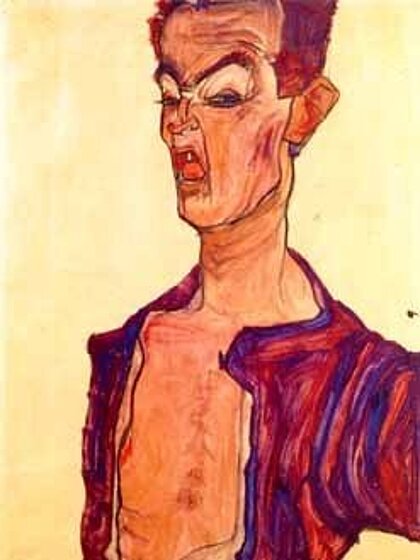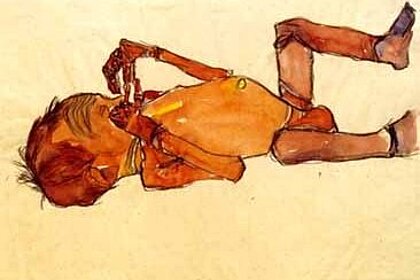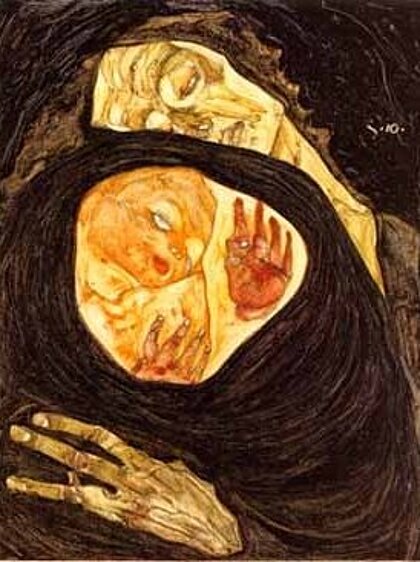80 years after his death, Egon Schiele's truthful approach to the central domains of our life, such as eroticism, sexuality and death, still remains provocative. His work is categorical and obsessive. No compromise is accepted. This attitude explains much of its internationally acclaimed quality. With Egon Schiele, Austrian Expressionism has gained international renown.
When Egon Schiele died in 1918 at the age of 28 from the Spanish disease, this most important painter of our century left a huge controversial oeuvre which was passionately discussed. Utterly rejected by some and excessively praised by others, his oil-paintings and drawings at the time were more of ideal than of material value. Today, top prices are paid for his paintings in international auctions, and only a few museums and private collectors can afford to purchase any of Schiele's works.
1910, Leopold Museum, Privatstiftung, Wien Since the 1950s, Professor Dr. Rudolf Leopold, a passionate admiror of Schiele's unique intransigent art, has compiled the most famous collection of the artist's work, and important museums in Europe, the USA and the Far East compete for the favour of loans from his collection.
Up to a few weeks ago, hundreds of thousands of visitors in Japan seized the opportunity to encounter Egon Schiele's imaginative language. At present, Graz is the only Austrian city to present a fascinating overview of the artist's individual productive stages in a series of 152 works. From here, both nude and landscape paintings exhibited will be sent directly to the Museum of Modern Art in New York.
Egon Schiele always objected to the decorative art of Viennese Secessionism whose aim was to represent the beauty of Nature and Art. In contrast to this, Schiele proposed a truthful vision of life, illustrated by the corporality of the human being, always questioning himself and, in a wider approach, the human condition. In spite of rejection and humiliation, he unwaveringly created works of art far from the traditional values of so called good taste.
His work had to be true. To help develop this truth, he exaggerated its formal language, both in the choice of themes and in composition, by distorting human bodies and the use of unnatural, stirring colours.
Subjective and autovisionary on the one hand, deeply rooted in an era of major social and political upheaval on the other, Egon Schiele's work displays in its very own way an unbroken potential for rebellion right up to this day.




















